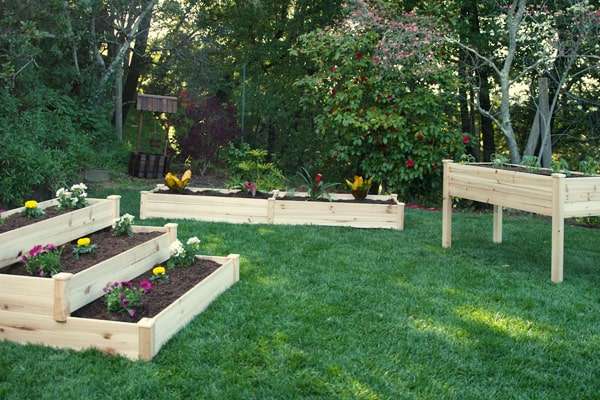In this article, we will discuss the pros and cons of lining a raised garden bed. We’ll explore how lining the bed can benefit your garden and some potential downsides to consider. By the end, you’ll have a better understanding of whether lining a raised garden bed is the right choice for you and your gardening needs. So, let’s get started!
Pros and Cons of Lining a Raised Garden Bed
Off-grid living and gardening have gained significant popularity in recent years. Many people are embracing the idea of growing their own food and taking control of their food supply. One technique that has gained particular attention is the use of raised garden beds. Raised garden beds offer numerous benefits, including better soil quality, improved drainage, and easier maintenance. However, the question remains: should you line your raised garden bed?
In this article, we will explore the pros and cons of lining a raised garden bed. We will discuss the advantages of lining, the different types of lining materials available, and the various considerations to keep in mind before making a decision. We will also provide a step-by-step guide on how to line a raised garden bed and discuss alternatives to lining. To offer a comprehensive perspective, we will share success stories from gardeners who have lined their raised beds, challenges they have encountered, and expert opinions on the matter. By the end, you will be equipped with the information necessary to make an informed decision on whether or not to line your own raised garden bed.
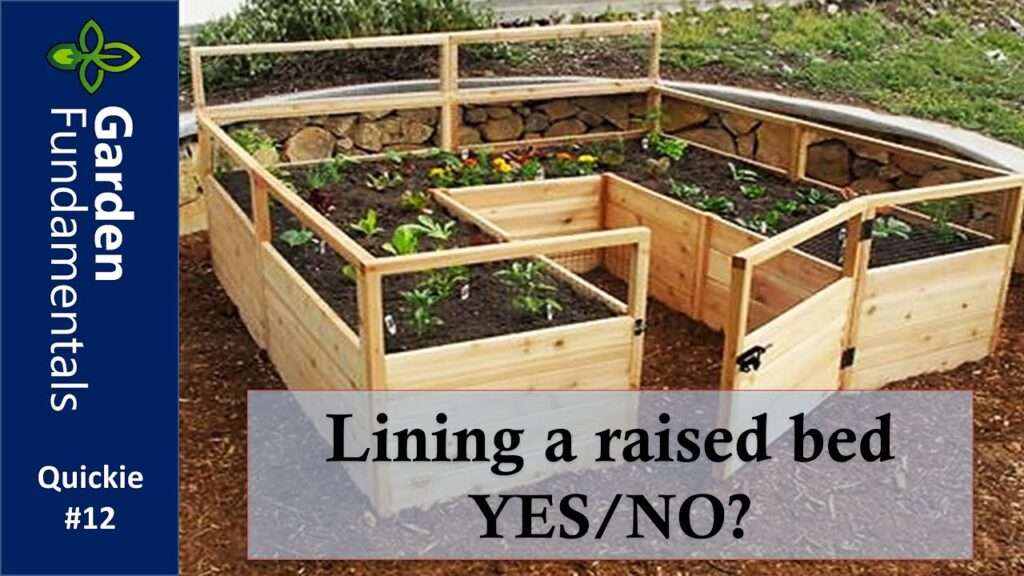
Definition of the Term
Before we delve into the pros and cons of lining a raised garden bed, let’s first define what a raised garden bed is. A raised garden bed, also known as a garden box or planter, is a structure that allows you to plant and grow plants above ground level. Typically, it consists of a rectangular or square box-like structure made from various materials such as wood, metal, or plastic. The raised bed is filled with soil, creating a contained environment for plants to thrive.
Advantages of Using a Raised Garden Bed
Raised garden beds offer numerous advantages over traditional in-ground gardening. Some of the benefits include improved soil quality, better drainage, and reduced strain on your back and knees. Additionally, raised garden beds provide better control over soil composition and make it easier to manage weeds and pests.
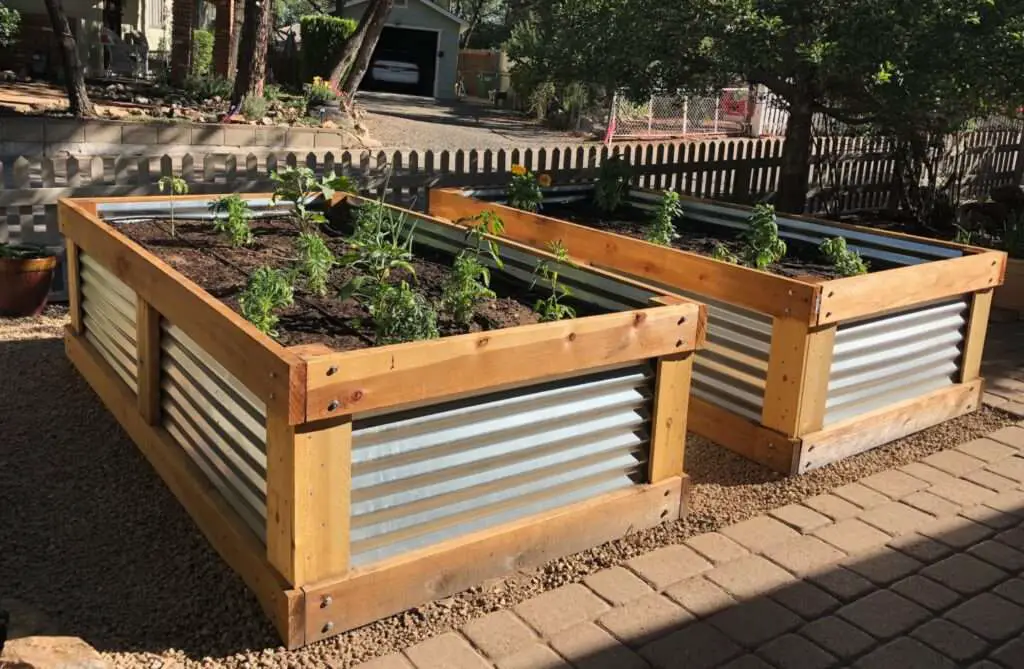
Pros of Lining a Raised Garden Bed
Prevents Soil Erosion
One of the key advantages of lining a raised garden bed is its ability to prevent soil erosion. Lining materials create a barrier between the soil and the surrounding environment, reducing the likelihood of soil being washed away during heavy rain or irrigation. This is especially beneficial if your raised garden bed is located on a slope or in an area prone to erosion.
Improves Drainage
Another advantage of lining a raised garden bed is improved drainage. Lining materials allow excess water to drain more efficiently, preventing waterlogged soil and ensuring optimal moisture levels for plant growth. Proper drainage is crucial as it helps prevent root rot and fungal diseases, which can be detrimental to plant health.
Reduces Weed Growth
Lining a raised garden bed can also significantly reduce weed growth. The lining material acts as a barrier, preventing weed seeds from germinating and taking root in the garden bed. This can save you time and effort in weed control, allowing you to focus on nurturing your plants and maximizing their growth potential.
Protects from Pests and Rodents
One of the most common challenges faced by gardeners is dealing with pests and rodents that can damage plants and negatively impact yield. Lining a raised garden bed helps protect your plants and soil from pests such as slugs, snails, and small rodents. By creating a physical barrier, linings can deter these unwanted visitors and ensure that your plants remain safe and healthy.
Increases Soil Temperature
Lining materials, such as dark-colored plastics or fabrics, can also help increase soil temperature in the raised garden bed. This is particularly beneficial in cooler climates or during the early spring season when soil temperatures tend to be lower. Warmer soil temperatures promote faster seed germination and plant growth, extending the growing season and increasing overall productivity.
Cons of Lining a Raised Garden Bed
While there are numerous advantages to lining a raised garden bed, there are also some drawbacks that should be considered before making a decision.
Limitation of Organic Matter
Lining a raised garden bed can restrict the incorporation of organic matter into the soil. Organic matter, such as compost and manure, is essential for improving soil fertility and structure. The lining material can create a barrier that hinders the natural breakdown and incorporation of organic matter into the soil, which may impact long-term soil health and plant growth.
Potential for Leaching of Chemicals
Certain lining materials, such as plastic, have the potential to leach harmful chemicals into the soil over time. This is especially true if the plastic lining material is made from low-quality or non-food grade materials. These chemicals can have a negative impact on plant health and may pose a risk to human health if consumed.
Extra Cost and Effort
Lining a raised garden bed requires additional materials and effort, which can increase the overall cost and maintenance requirements of your garden. Lining materials, such as plastic liners or geotextile membranes, can be more expensive compared to traditional gardening methods. Additionally, installing and maintaining the lining material may require regular inspection and replacement, adding to the overall effort involved in gardening.
Risk of Water Accumulation
While lining a raised garden bed improves drainage, it also poses the risk of water accumulation if not properly managed. Excess water can accumulate between the lining material and the garden bed, leading to waterlogging and root rot. It is important to ensure proper drainage and irrigation management to prevent this issue.
Decreased Microbial Activity
Lining a raised garden bed can potentially reduce microbial activity in the soil. Microbes play a crucial role in breaking down organic matter, cycling nutrients, and creating a healthy soil ecosystem. The lining material may restrict the movement and interaction of soil organisms, which can impact overall soil fertility and plant performance.
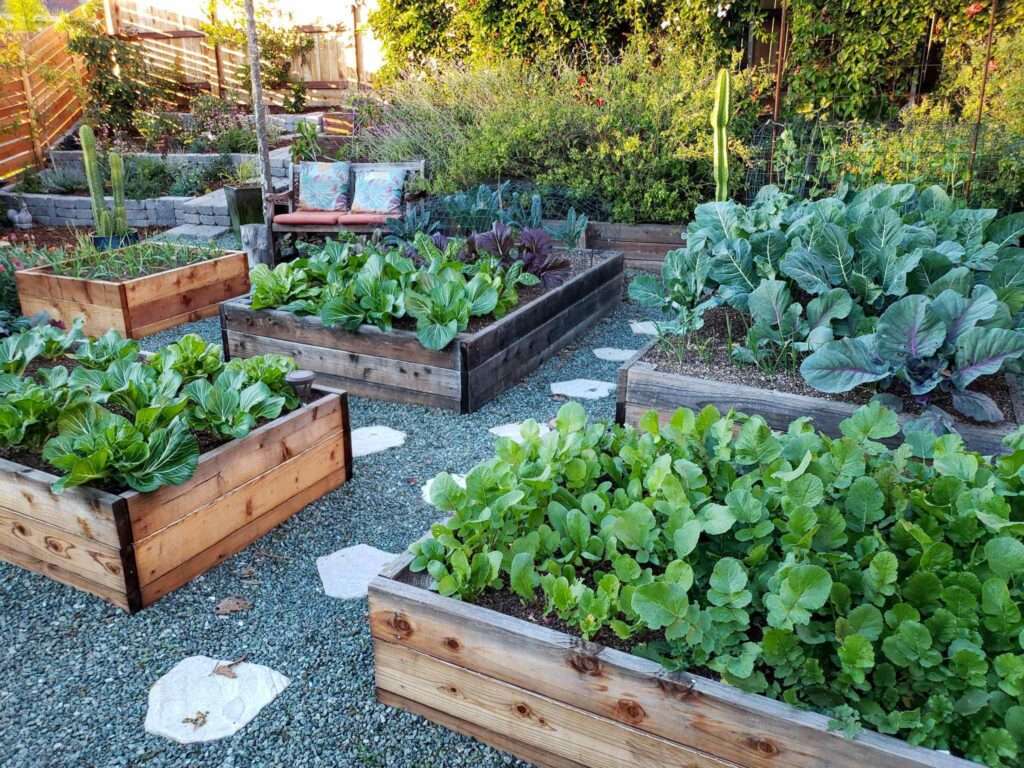
Different Types of Lining Materials
There are several types of lining materials available for lining a raised garden bed. The choice of lining material depends on various factors such as personal preference, climate, budget, and availability. Here are some common lining materials used in raised garden beds:
Plastic Liners
Plastic liners, such as polyethylene or PVC, are commonly used to line raised garden beds. They provide effective weed control and prevent soil erosion. However, it is important to choose food-grade plastics and ensure proper installation to avoid chemical leaching.
Landscape Fabric
Landscape fabric, also known as weed barrier fabric, is a permeable material that allows water and nutrients to pass through while blocking weed growth. It is an affordable and widely available option for lining raised garden beds. However, landscape fabric may break down over time and can be challenging to remove if replacement is necessary.
Geotextile Membranes
Geotextile membranes are highly durable and permeable materials that provide excellent soil drainage while preventing weed growth. They are commonly used in landscaping and civil engineering projects. Geotextile membranes are more expensive compared to other options, but they offer long-term durability and performance.
Wood Barriers
Wood barriers, such as cedar or redwood, can be used as a natural lining option for raised garden beds. These materials provide a rustic and aesthetically pleasing look to your garden while offering some weed control and protection against erosion. However, wood barriers may degrade over time and require regular maintenance to ensure longevity.
Reclaimed Materials
Reclaimed materials, such as bricks, stones, or tiles, can be repurposed to line a raised garden bed. This option not only provides functional protection but also adds aesthetic value to your garden. However, it may require more effort and time to source and install reclaimed materials.
Considerations Before Lining a Raised Garden Bed
Before deciding whether or not to line your raised garden bed, there are several factors you should consider. These include local climate and rainfall patterns, soil composition and drainage, garden bed location and sun exposure, personal preference and gardening goals, as well as the availability and cost of lining materials.
Local Climate and Rainfall
Understanding your local climate and rainfall patterns is crucial when deciding whether or not to line your raised garden bed. If you live in an area with heavy rainfall or frequent irrigation, lining can help prevent soil erosion and waterlogging. Conversely, if you live in an arid region with minimal rainfall, lining may not be necessary and can even hinder proper drainage.
Soil Composition and Drainage
Assessing the composition and drainage capacity of your soil is essential in determining whether or not to line your raised garden bed. If your soil is heavy in clay and has poor drainage, lining can help improve it by allowing excess water to drain more effectively. However, if your soil is already well-draining, lining may not be necessary and can impede natural water movement.
Garden Bed Location and Sun Exposure
Consider the location of your raised garden bed and its exposure to sunlight when deciding whether or not to line it. If your garden bed is situated on a slope or in an area prone to erosion, lining can help prevent soil loss. Additionally, if your garden bed is located in a shady spot with limited sunlight, lining can help increase soil temperature and improve plant growth.
Personal Preference and Gardening Goals
Take into account your personal preferences and gardening goals when deciding whether or not to line your raised garden bed. If you prioritize low-maintenance gardening and want to minimize weed growth and pest damage, lining may be beneficial. However, if you prefer a more natural and organic approach to gardening, you may opt not to line your raised garden bed.
Availability and Cost of Lining Materials
Consider the availability and cost of different lining materials in your area. Some materials may be more readily available and affordable than others. Additionally, consider the long-term cost and durability of the lining material, as frequent replacement or maintenance can add to the overall cost of your garden.
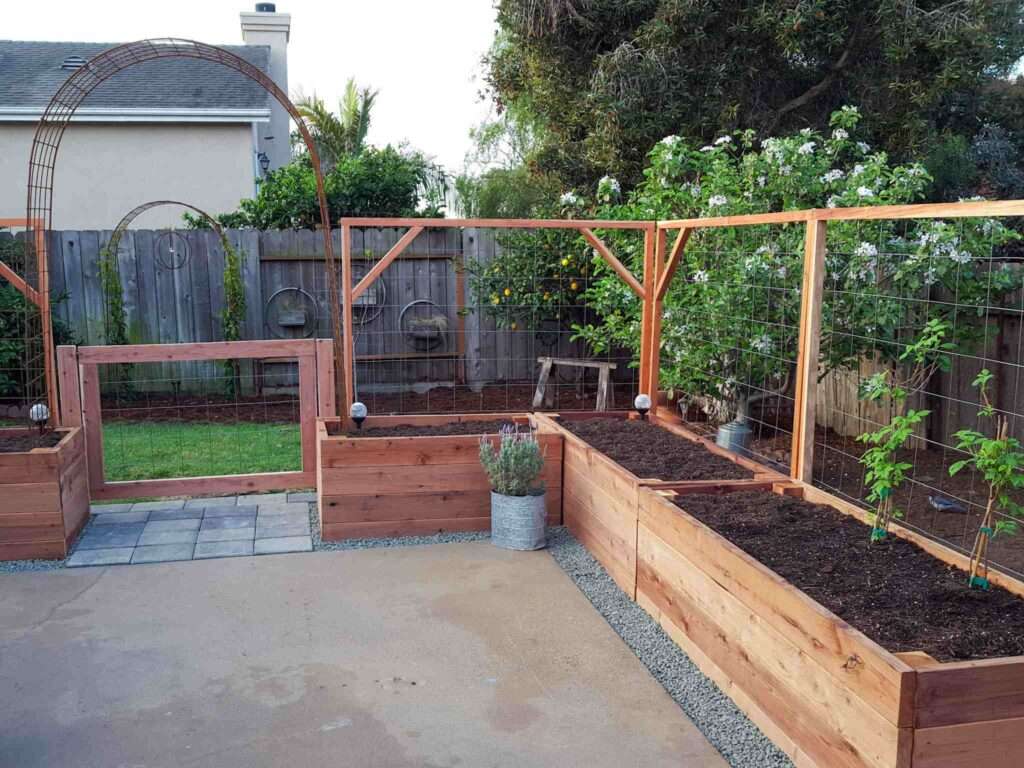
Step-by-Step Guide to Lining a Raised Garden Bed
If you decide to line your raised garden bed, here is a step-by-step guide to help you through the process:
1. Prepare the Garden Bed
Ensure that your raised garden bed is clean and free of weeds or debris. Remove any existing plants or vegetation and level the soil surface as much as possible.
2. Select the Appropriate Lining Material
Choose a lining material that is suitable for your specific needs and preferences. Consider factors such as cost, durability, and availability. Ensure that the chosen material is food-grade and safe for use in a garden setting.
3. Measure and Cut the Liner
Measure the dimensions of your raised garden bed and cut the lining material accordingly. Leave some excess material around the edges to secure it to the sides of the garden bed.
4. Secure the Liner in Place
Place the cut liner inside the raised garden bed, ensuring that it covers the entire interior surface. Use staples, nails, or other fasteners to secure the edges of the liner to the sides of the garden bed. Make sure the liner is taut and free of wrinkles.
5. Cut Holes for Planting
Using a sharp knife or scissors, carefully cut small slits or X-shaped holes in the liner where you intend to plant your seeds or transplants. Make sure the holes are large enough to accommodate the root ball of the plant.
6. Fill the Bed with Soil and Amendments
Fill the raised garden bed with a mixture of high-quality soil and organic matter such as compost or manure. Ensure that the soil is evenly spread and level within the bed. Water the soil to help settle it and remove any air pockets.
Alternatives to Lining a Raised Garden Bed
If you are hesitant to line your raised garden bed, there are alternatives that you can consider. These alternatives can provide some of the benefits of lining without the drawbacks. Some alternatives include:
Double-Digging Method
The double-digging method involves deeply loosening the soil in the raised garden bed, incorporating organic matter, and leveling the surface. This method improves soil drainage and fertility without the need for lining.
Using a Weed Barrier Fabric
Instead of using a complete lining material, you can consider using a weed barrier fabric on the bottom of your raised garden bed. This allows for water drainage while preventing weed growth. However, keep in mind that this method may not provide the same level of erosion control as a complete lining.
Implementing Companion Planting
Companion planting involves planting certain crops together to maximize their individual growth potential. By choosing plants that have synergistic relationships, you can naturally reduce weed growth and deter pests without the need for lining.
Applying Natural Pest Control Techniques
Implementing natural pest control techniques, such as companion planting, using insect-repelling plants, or deploying physical barriers, can help protect your plants from pests and rodents without the need for lining.
Amending the Soil with Organic Matter
Regularly amending your soil with organic matter, such as compost or well-rotted manure, can improve soil fertility, drainage, and microbial activity. This can help compensate for the limitations of lining and promote healthy plant growth.

Success Stories from Gardeners Who Lined Their Raised Beds
Many gardeners have experienced success with lining their raised garden beds. Here are some benefits they have reported:
Improved Plant Growth and Yield
Gardeners have observed improved plant growth and increased yield in their lined raised garden beds. Lining provides a controlled environment that allows plants to grow in optimal conditions without competition from weeds or damage from pests.
Reduced Weed Competition
Lining a raised garden bed significantly reduces weed competition, which can be a major challenge in conventional gardening methods. This allows plants to receive nutrients and water more efficiently, leading to healthier growth and higher productivity.
Improved Water Management
Lining a raised garden bed helps improve water management by preventing soil erosion and promoting efficient drainage. Additionally, the lining material can help regulate soil moisture levels, reducing water waste and ensuring plants receive adequate hydration.
Protection against Pests and Critters
Gardeners have reported a decrease in pest and critter damage to their plants when using lined raised garden beds. The physical barrier created by the lining material deters pests such as slugs, snails, and small rodents, ensuring plants remain undamaged.
Extended Growing Season
Lining a raised garden bed can help extend the growing season by increasing soil temperatures. This allows gardeners to plant earlier in the spring and continue growing crops later into the fall, maximizing their harvest and overall productivity.
Challenges Faced by Gardeners When Lining Raised Beds
While many gardeners have experienced success with lining their raised garden beds, there are some challenges and drawbacks that should be considered:
Leaching of Harmful Chemicals
Certain lining materials, particularly low-quality or non-food grade plastics, have the potential to leach harmful chemicals into the soil. This can have negative effects on plant health and pose a risk to human health if consumed. It is important to choose safe and high-quality lining materials to mitigate this risk.
Poor Drainage Leading to Waterlogging
If not properly managed, lining a raised garden bed can lead to poor drainage and waterlogging. Excess water can accumulate between the lining material and the bed, causing the soil to become waterlogged and potentially leading to root rot. Proper drainage design and regular inspection are necessary to prevent this issue.
Difficulty in Root Expansion
Lining a raised garden bed can restrict the natural expansion and exploration of plant roots. Some lining materials may create physical barriers that inhibit root growth, potentially limiting plant development and overall productivity. Careful consideration and adequate soil preparation can help mitigate this challenge.
Excessive Heat Retention
Certain lining materials, especially dark-colored plastics or fabrics, can retain excessive heat in the raised garden bed. This can lead to elevated soil temperatures, potentially causing stress or damage to sensitive plants. Monitoring soil temperature and providing shading or other cooling measures may be necessary.
Inconvenience during Bed Maintenance
Lining a raised garden bed adds an extra layer of complexity to bed maintenance, such as weeding, soil amendments, and irrigation. The lining material may need to be temporarily removed or adjusted during these activities, which can be time-consuming and potentially damage the lining material if not handled with care.
Expert Opinions on Lining Raised Beds
To provide a well-rounded perspective on the matter, let’s consider the opinions of horticulturists, experienced gardeners, and scientific research and studies.
Views from Horticulturists
Horticulturists generally agree that lining a raised garden bed can provide numerous benefits, such as improved drainage, reduced weed growth, and enhanced pest protection. However, they also emphasize the importance of selecting safe and high-quality lining materials to avoid potential chemical leaching and other issues. Additionally, horticulturists encourage gardeners to consider their specific gardening goals, climate, and soil conditions before deciding to line their raised garden beds.
Advice from Experienced Gardeners
Experienced gardeners have differing opinions on whether or not to line a raised garden bed. Some prefer the added benefits of lining, such as increased control over soil quality and weed control, while others prefer a more natural and organic approach to gardening. Many experienced gardeners emphasize the importance of considering factors such as climate, soil conditions, and personal preferences before deciding whether or not to line a raised garden bed.
Scientific Research and Studies
Scientific research and studies on the topic are limited but generally support the idea that lining a raised garden bed can provide advantages such as improved drainage, reduced weed competition, and increased soil temperature. However, there is a need for more research to assess the long-term effects of lining on soil health and plant performance, as well as the potential risks associated with chemical leaching.
Conclusion
In conclusion, whether or not to line a raised garden bed depends on individual preferences, gardening goals, and specific environmental factors. Lining can provide numerous benefits such as improved drainage, reduced weed growth, and enhanced pest protection. However, it also has drawbacks such as potential limitations on organic matter incorporation and the risk of chemical leaching. It is crucial to carefully consider factors such as climate, soil composition, and personal gardening goals before making a decision.
By weighing the pros and cons, considering alternatives, and seeking expert opinions, you can make an informed decision that aligns with your gardening style, promotes healthy plant growth, and ensures sustainability in your off-grid living journey.
Happy gardening!




